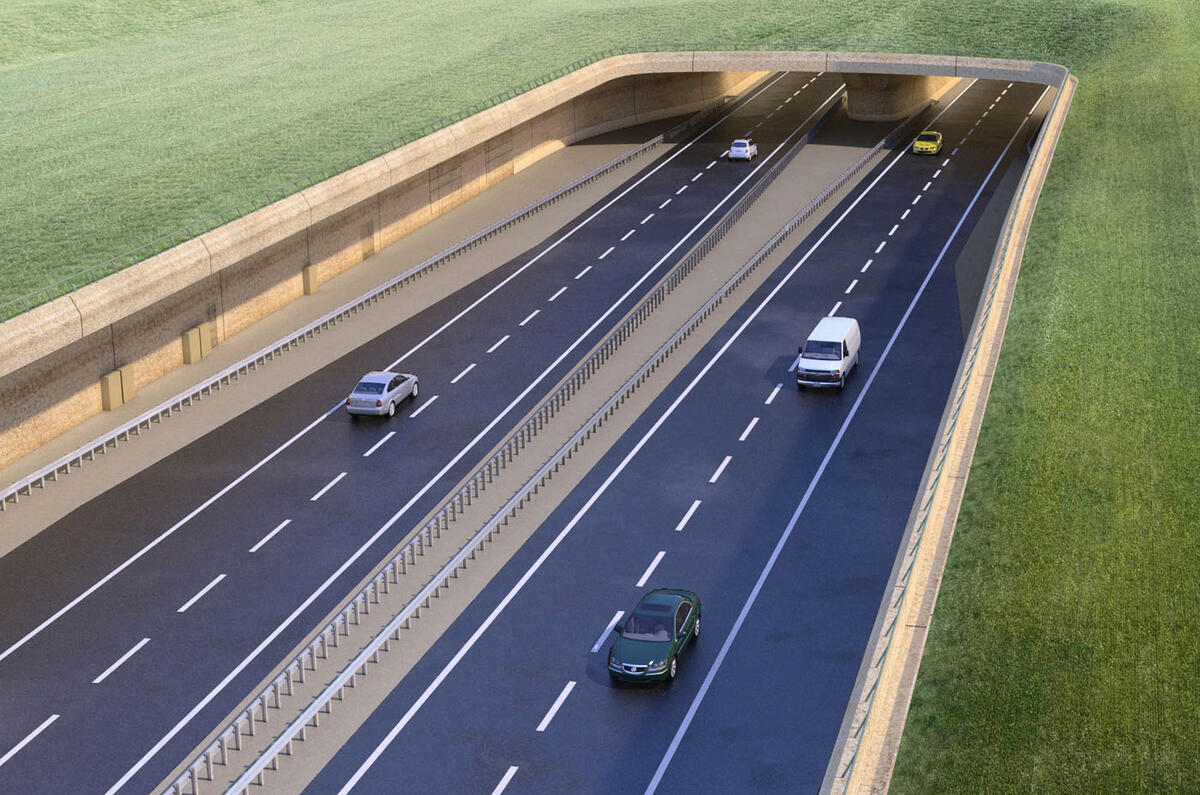Twelve years after it was given the go-ahead and five years since construction started, the new 0.9-mile Silvertown Tunnel beneath the Thames that links Silvertown in east London to the Greenwich Peninsula will open on 7 April.
The announcement by Transport for London (TfL) is a rare piece of good news at a time when, elsewhere in the country, many proposed road schemes are being axed in the face of cutbacks or opposition.
Shortly after taking office in July last year, the Labour government scrapped the A27 upgrade and the controversial A303 Stonehenge tunnel scheme that had cost taxpayers £166 million in development.
Then, in the Autumn Budget in October, it axed a further five National Highways projects – a decision taken because, according to then transport secretary Louise Haigh, they were “unaffordable”.
The previous government had said the A1 Morpeth to Ellingham scheme – one of the five axed – would be funded from money saved by scrapping the northern leg of HS2. However, with the new government facing what it claimed was a £22 billion “black hole” in the public finances, it had other plans.
Against this backdrop, the completion of the Silvertown Tunnel seems like a miracle – except that the crossing’s £2.2bn cost has been funded by the private sector. TfL says this will be repaid over the next 25 years by tolls of up to £4.
While this toll-based model has secured the future of the tunnel, major road projects funded instead by taxpayers remain vulnerable to cancellation when government finances are squeezed.
Economists, such as Bradshaw Advisory’s Matthew Brighty, warn that putting UK roads to the back of the funding queue risks harming the government’s plans to grow the economy.
Brighty said: “If Labour wants to grow the economy and attract investment, it is essential to commit to long-term road infrastructure projects.
“Investing in improving our outdated roads and tackling rising congestion before it gets worse will boost business, productivity, connectivity and unlock economic potential. The strategic road network needs real investment.”
However, the level of investment Brighty believes is required has, in recent years, not materialised or has been spent ineffectively. Every five years, the government’s road investment strategy (RIS) sets out where cash will be spent. The most recent, RIS2, which covers the period to March 2025, pledged to spend £27.4bn on the strategic road network, including committing £14.1bn to 69 road enhancement projects. However, around £3.5bn of the budget was clawed back and the number of projects reduced.




Join the debate
Add your comment
The government funding squeeze on road infrastructure is concerning, especially as it impacts safety, congestion, and economic growth. Prioritizing long-term investment in roads is essential for sustainable development and public well-being. Hopefully, this issue gets the attention it deserves soon.
The government funding squeeze on road infrastructure is concerning, especially as it impacts safety, congestion, and economic growth. Prioritizing long-term investment in roads is essential for sustainable development and public well-being. Hopefully, this issue gets the attention it deserves soon.
"The UK’s roads are the backbone of a growing economy" and thats why we are cancelling virtually everything that was planned.......
The Morpeth to Ellingham stretch is ridiculous to cancel, two major UK cities without a dual carriageway road connection is just a farce.